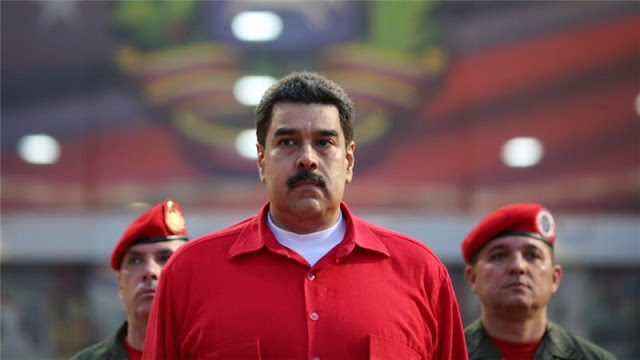IS CRYPTOCURRENCY CHANGING OUR WORLD?
The financial world experienced a great revolution in the year 2009 when a group of inventors across the globe led by Satoshi Nakamoto came up with a blockchain technology which can conveniently be termed “Cryptocurrency”. Unfortunately, this development upset a lot of persons especially powerful governments around the world, which have benefitted in no small measure from the centralized financial system for many decades if not centuries. Today, disciples and beneficiaries of the old order seem to have come to swallow the bitter pill that Cryptocurrency is not only changing our world but has come to stay.
Financial authority, for a very long time, has enjoyed centralization to the benefit of the selected few and detriment of the greater majority. Governments around the world have often capitalized on this monopoly to effectively subdue the masses by controlling the rate of cash flow. No wonder why financial experts believe that the traditional/centralized banking system is one of the main drivers of inequality. In the last 50 years alone, the world has experienced countless financial crises: the G reat Depression, the Suez Crisis, the International Debt Crisis, the East Asian Crisis, the Latin American Debt Crisis, the Great Recession to mention but a few. In each case, the middle and lower class income earners are always worst-hit.
It was within these circumstances that the blockchain technology called Cryptocurrency was birthed. The common place definition of Cryptocurrency is one which holds that it is a digital currency that uses cryptography to secure the processes involved in generating units, conducting transactions and verifying exchange of currency ownership. It sought to establish the decentralization of financial authority and put an end to the monopoly by a few. It aimed to overcome the deficiencies of the Central Bank system by allowing each bank to issue its own currency.
BLOCKCHAIN TECHNOLOGY
Blockchain technology makes use of mathematical logic to endorse currency and ensure its issuance and circulation is open, transparent and immutable. These algorithms, which rival centralized authorities like large banking institutions, aim to prove that free banking is viable and can provide a feasible path for future currency reforms. By reducing financial risks, it eliminates financial crises. This technology, which drives Cryptocurrecncy, is Energy and Chip technology required to develop the computing power needed to reach more hash rate. This is the progress of human civilization.
DRAWBACKS OF THE FIRST CRYPTO COIN
Bitcoin as the first crypto coin and world’s most popular Cryptocurrency, was founded on this principle of giving the masses full control over their money. It also promised anonymity when conducting transactions. However, it failed on these promises as about 90% of its 21 million coins ended up in the wallets of the rich who only account for 2.5% of its holders. Again, network transactions can slow down causing delay in transaction confirmation in times of heavy traffic.
OUT OF THE WOODS
The volatility of Bitcoin as well as its low scalability made it imperative that a new coin(s) had to be invented if the crypto currency will succeed the traditional/fiat currency. This will have a fixed cap and scale within seconds to minutes of transaction and must distribute wealth adequately. These needs are the forces that created the first digital currency which for the first time, distributed wealth to the world through phone mining. Anyone who wants to participate in the mining of the token can download the application, register a free account either on IOS or Android and mine the said token with the simple touch of a button. There are no geographical restrictions to this particular activity.
As of today, more than 55 million people are engaged in acquisition of Pi token through smart phone mining. By distributing the wealth to everyone that cares to collect, the inventors believe that they will solve the problem occasioned by the manipulation of the currency by rich individuals whose actions lead to high volatility of the Bitcoin to their own advantage. Again, the distribution of the coin to the masses and capping it to a fix minting will enable the coin enjoy slow and steady growth and shall be a hedge over inflation. Furthermore, the scalability of the coin(s) is equal to none as transactions receive confirmations with the speed of light. Soon after the technology that created Pi was born, more of its kind started to grace the internet. Some of these include: Satoshi Core, Bitcoin Hunter, Cheatmoon, Sigma Network, to mention but a few. Each promises to be an improvement over its predecessor. These coins all have one thing in common: they can be obtained through free mining using smart phone. They have no geographical location and most of all THEY ARE FREE FOR ALL.
To mine a particular token, one simply needs to restart the mining every 12 or 24 hours by clicking on the mining button. In most crypto networks, Token holders, for instance, are able to vote on proposals that help determine the future of the platform so much that the more token one has, the more voting power one possesses.
CONCLUSION
Whatever happens to a man’s finances affects his state of living, and whatever affects a man’s state of living anywhere reflects the condition of humanity everywhere. In a world ruled by capitalism and time characterized by financial crises, the panacea to incessant global recession may well rest on the shoulders of a blockchain technology called ‘CRYPTOCURRENCY”. The future, with this technology, no doubt, is going to be a smart contract world, a programmable world, with new currencies, finances, organizational structures and ways of collaboration. No matter how sad a reality this must be for powerful governments around the world, one thing is clear, cryptocurrency is not only changing our world but has come to stay. We either accept this reality and live with it or fight it to our own peril.
.jpg)



Comments
Post a Comment